38 how many calories are food labels based on
Understanding Food Nutrition Labels | American Heart Association Remember that the information shown in the label is based on a diet of 2,000 calories a day. You may need less or more than 2,000 calories depending upon your age, gender, activity level, and whether you're trying to lose, gain or maintain your weight. How to Read Food Labels Without Being Tricked - Healthline Low-calorie products have to have one-third fewer calories than the brand's original product. Yet, one brand's low-calorie version may have similar calories as another brand's original. Low-fat.
How Do They Calculate Calories on Food Labels? His 4-9-4 method came up with an average of 4 calories per gram of protein, 9 calories per gram of fat, and 4 calories per gram of carbohydrate that is still in use today. For example, using the Atwater method, a box of crackers that contains per serving... 5 grams of fat (5 x 9 = 45 calories) 22 grams of carbohydrate (22 x 4 = 88 calories)
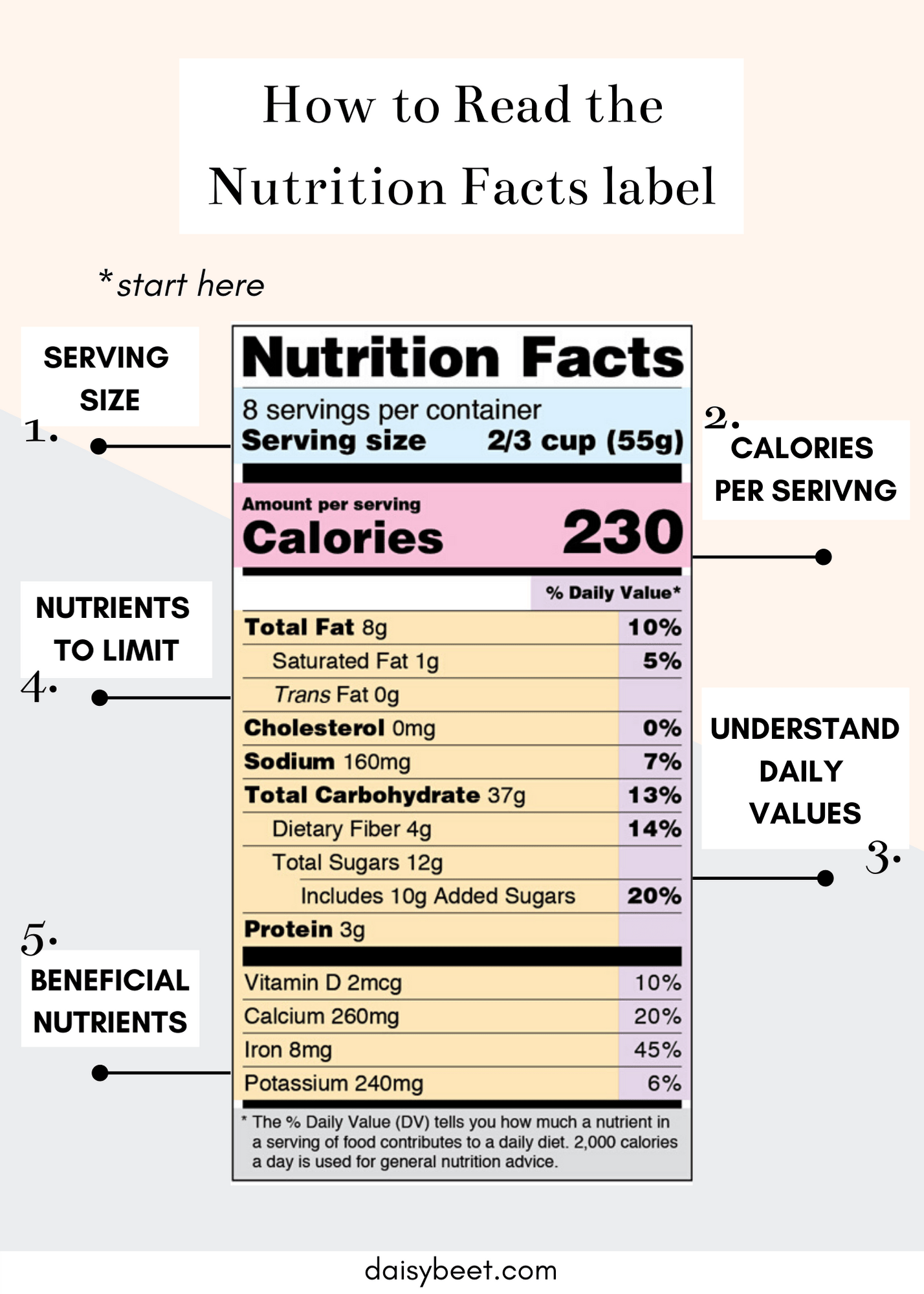
How many calories are food labels based on
Food Labels and Counting Carbs - dummies Some food packages use a version that omits the footnote details from the bottom of the label and simply provides the key nutrition facts. Taking a sneak peek at newfangled food labels The current food label imagery has been in use for more than 20 years. The Nutrition Facts label has recently been redesigned, revamped, and improved. What is the number of calories food labels are based on? Study now. Best Answer. Copy. Most food labels are based off of a 2000 calorie a day diet for the percentages. The calories are just per servin of that specifi item of food. Wiki User. How To Read Food and Beverage Labels - National Institute on Aging The percent Daily Value (% DV) tells how much a nutrient in a serving of the food or beverage contributes to a total daily 2,000-calorie diet. Although the average person needs 2,000 calories a day to maintain their weight, individuals may need more or fewer depending on their lifestyle.
How many calories are food labels based on. How To Count Calories Without Labels (4 Ways) - FeastGood.com For example 200 grams of salmon that you have weighed on your scale comes out to about 416 calories, according to Google. If you had eyeballed this portion at 120 grams (about 250 calories), you would be underestimating by 166 calories. How accurate are nutrition labels? The number of calories in a food is listed on the label. What they don't explain is that the number of calories you get from your food is determined by how processed it is. Cooking, blending, mashing, and utilizing refined flour instead of unprocessed flour are all examples of food processing. What is the 5 20 rule Understanding Food Labels - Nutrition: Science and Everyday Application ... The FDA uses the following definitions for interpreting the %DV on food labels:4. 5%DV or less means the food is low in a nutrient. 10% to 19%DV means the food is a "good source" of a nutrient. 20%DV or greater means the food is high in a nutrient. Food Label Accuracy of Common Snack Foods - PMC In addition to gross calories from bomb calorimetry, we calculated gross calories of the snack foods based on macronutrient weights as reported on the food labels using specific heats of combustion (fat: 9.4 kcal/g, carbohydrate 4.1, protein 5.65) and metabolizable calories applying general factors to label macronutrients (fat: 9 kcal/g ...
Food Labeling 101: Understanding the Nutrition Facts Label The food label on packaged food has been there since the early 1990's. With all the label confusion, the FDA finally decided it was time the nutrition label got a makeover (we couldn't agree ... Why most food labels are wrong about calories Food labels seem to provide all the information a thoughtful consumer needs, so counting calories should be simple. But things get tricky because food labels tell only half the story. A calorie is ... How calories are calculated: Science behind the | Live Science A calorie is a unit of energy, not a measure of weight or nutrient density. The calories you see on nutrition labels, however, are actually kilocalories, or kcals, according to the National... Calories on the New Nutrition Facts Label | FDA - U.S. Food and Drug ... One package of food may contain more than one serving, so, if you eat two servings you would be getting two times the calories shown on the label. For example, if you ate one serving of the...
Counting Calories? You Might Not Want to Trust Food Labels - Culture Published January 1, 2015 • 5 min read If your dieting self has ever tried to piece together one whole chip from several fragments to determine what a food label's "about six chips" looks like... Food Labels | CDC - Centers for Disease Control and Prevention If you eat the whole thing, you are eating 8 times the amount of calories, carbs, fat, etc., shown on the label. Total Carbohydrate shows you types of carbs in the food, including sugar and fiber. Choose foods with more fiber, vitamins, and minerals. Choose foods with lower calories, saturated fat, sodium, and added sugars. Avoid trans fat. 3 Ways to Calculate Food Calories - wikiHow Alcohol also contains a significant number of calories. Each gram of alcohol is about 7 calories. 3. Multiply each macronutrient by its caloric equivalent. A gram of protein is estimated to contain about 4 calories. A gram of carbohydrates also has 4, and a gram of fat is worth a whopping 9 calories. Are the Calorie Counts on Food Labels Accurate? Today, nearly every packaged food you can find includes a calorie count on the label. These numbers describe how much energy your body gets from a particular bar of candy or box of cereal. And while the effectiveness of counting calories has been debated, for many, it's a helpful weight loss tool. But can you really count on calorie labels?
Understanding Food Labels - The Nutrition Source One might assume the small bag to contain 1 serving, but it actually contains 3 servings so that eating the whole bag provides 300 calories. With the updated label, the same size bag would show 1 serving at 300 calories. Keep in mind that the serving size is not a recommendation for everyone about how much to eat, but rather a reference point.
Are Calorie Counts on Food Labels Accurate? • Cathe Friedrich A calorie is the amount of energy needed to raise the temperature of one gram of water by 1 degree Centigrade, although the calorie count you see on food packages is usually expressed in kilocalories, equivalent to 1,000 calories. These days, calorie counts are measured using another technique called the Atwater system.
Calories, Nutrition Facts, and Food Labels - Quizizz A nutrition facts label is based off of a _____ calorie diet. answer choices . 2000. 2500. 3000. 1500 2000 alternatives 2500 ... Q. Reading the food label can help you compare products, make healthier choices and provide valuable information to people with food allergies. answer choices
Where 2000 Calories on Food Labels Comes From - Rachael Hartley Nutrition Calories on Food Labels Doesn't Much Matter Anyway . I hope knowing this history takes away some of the power behind the 2,000 calories on food labels. At the end of the day, if we didn't live in a world that tries to convince you weight gain is the worst thing that could possibly happen, seeing calories on a food label wouldn't have any ...
The Science Behind Calories and Nutrition Facts Labels The calorie number we see on food labels refers to a kilocalorie (kcal), which is also known as a large calorie or a food calorie. A kilocalorie is 1 000 calories. One kilocalorie is the amount of energy it takes to heat one kilogram of water one degree Celsius at sea level.
Food Labels 101 - Penn Medicine Nutrition labels are based on a daily 2,000 calorie diet. Depending on your age, gender and activity level, you may need to consume more or less than 2,000 calories per day, so keep this in mind when viewing each label. Now let's take a look at the parts of the nutrition facts label and break it all down. Anatomy of a Nutrition Facts Label
How to Understand and Use the Nutrition Facts Label | FDA - U.S. Food ... That is two times the calories and nutrients shown in the sample label, so you would need to double the nutrient and calorie amounts, as well as the %DVs, to see what you are getting in two...
Reading Food Labels (for Parents) - Nemours KidsHealth The information on food labels is based on an average diet of 2,000 calories per day. But the actual number of calories and nutrients that kids need will vary according to their age, weight, gender, and level of physical activity. (For more guidance, check out the USDA's MyPlate .) Total Fat
How to Read Food Labels & Count Carbs | Allulose A food or beverage with a total fat PDV of 10% provides 10% of the total fat someone on a 2,000 calories per day diet should eat. The same goes with cholesterol and sodium. Keeping these in check, and looking for lower numbers, can help reduce risk of heart disease, high blood pressure and cancer. Get enough of Fiber, Vitamins, Minerals
How To Read Food and Beverage Labels - National Institute on Aging The percent Daily Value (% DV) tells how much a nutrient in a serving of the food or beverage contributes to a total daily 2,000-calorie diet. Although the average person needs 2,000 calories a day to maintain their weight, individuals may need more or fewer depending on their lifestyle.
What is the number of calories food labels are based on? Study now. Best Answer. Copy. Most food labels are based off of a 2000 calorie a day diet for the percentages. The calories are just per servin of that specifi item of food. Wiki User.
Food Labels and Counting Carbs - dummies Some food packages use a version that omits the footnote details from the bottom of the label and simply provides the key nutrition facts. Taking a sneak peek at newfangled food labels The current food label imagery has been in use for more than 20 years. The Nutrition Facts label has recently been redesigned, revamped, and improved.


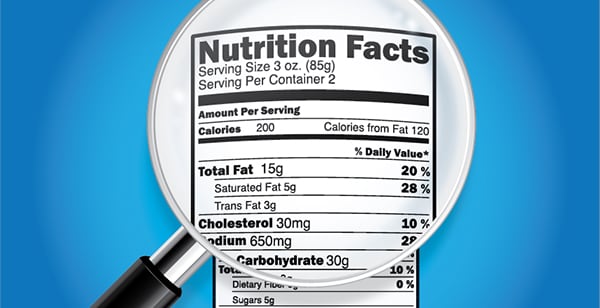

/Untitled-design-1--5755c3703df78c9b46903dab.jpg)

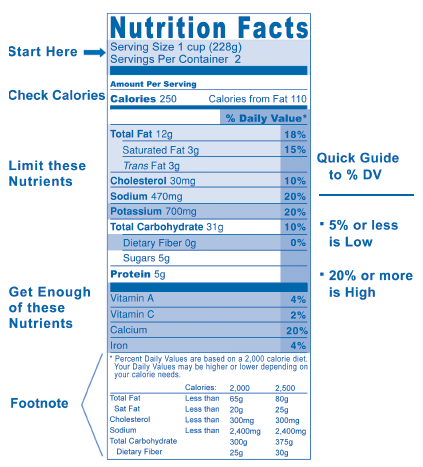





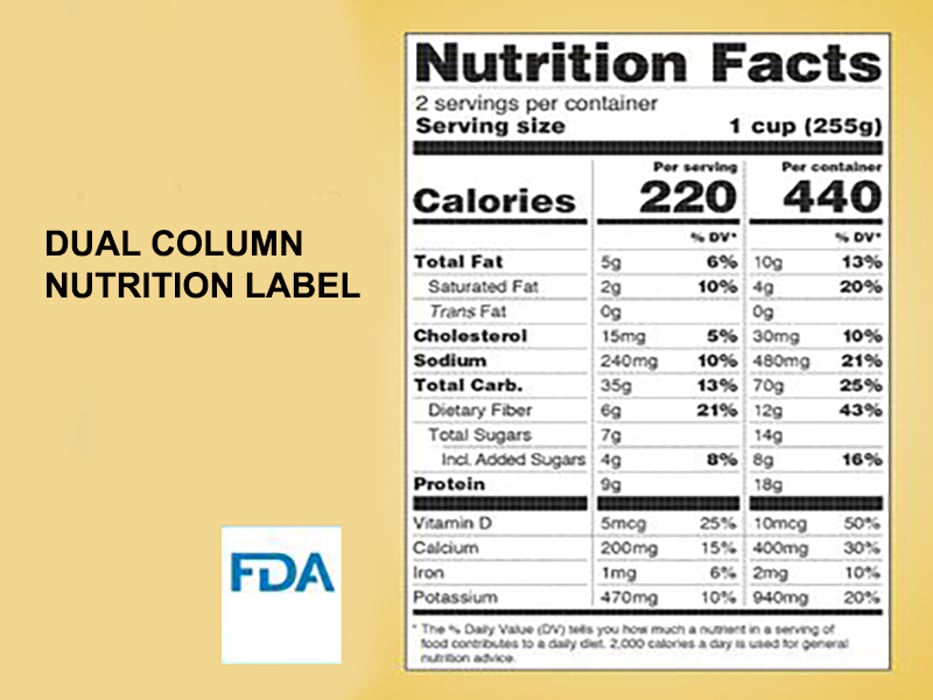



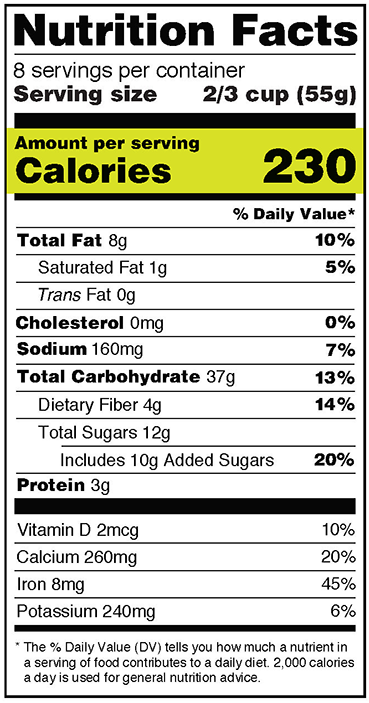
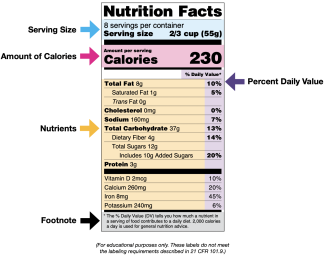
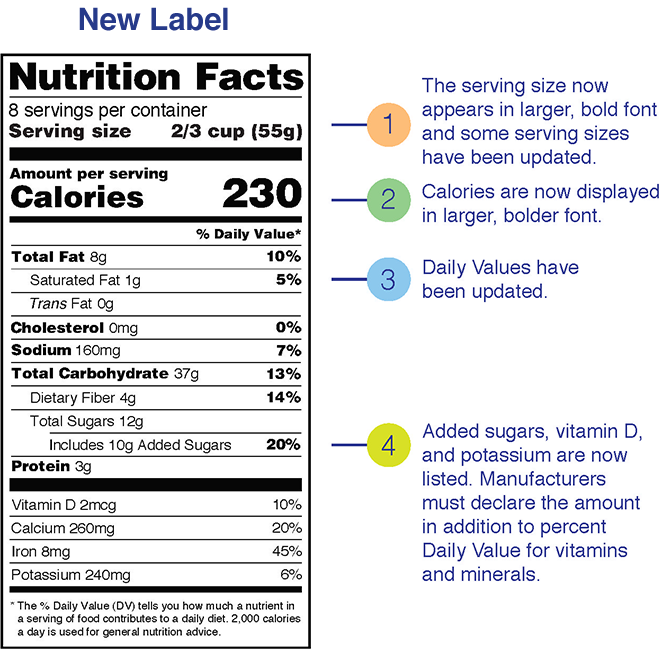

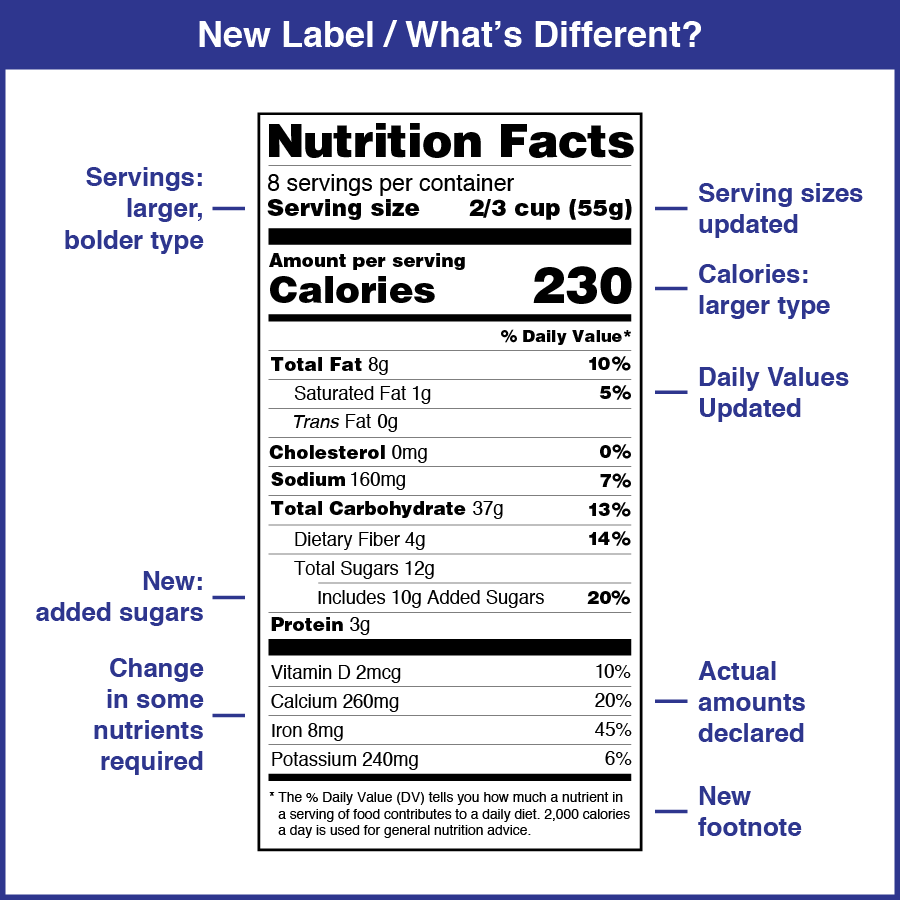


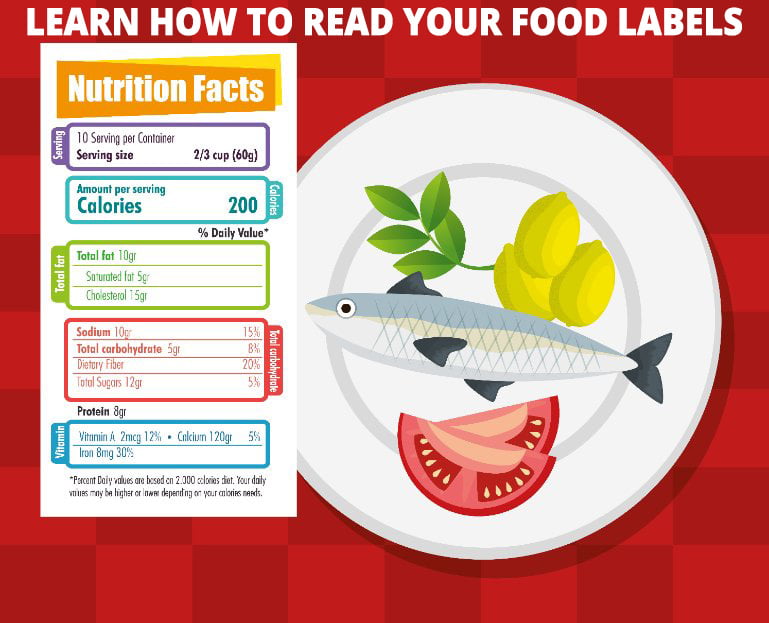

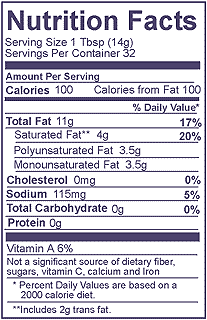
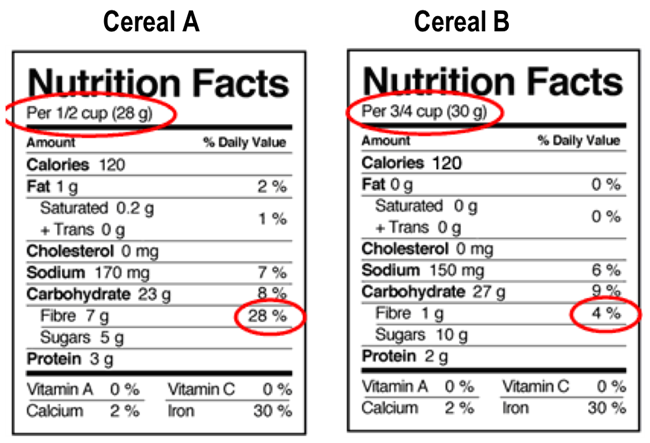
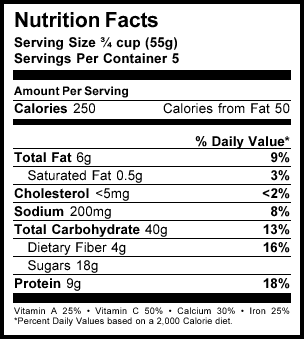
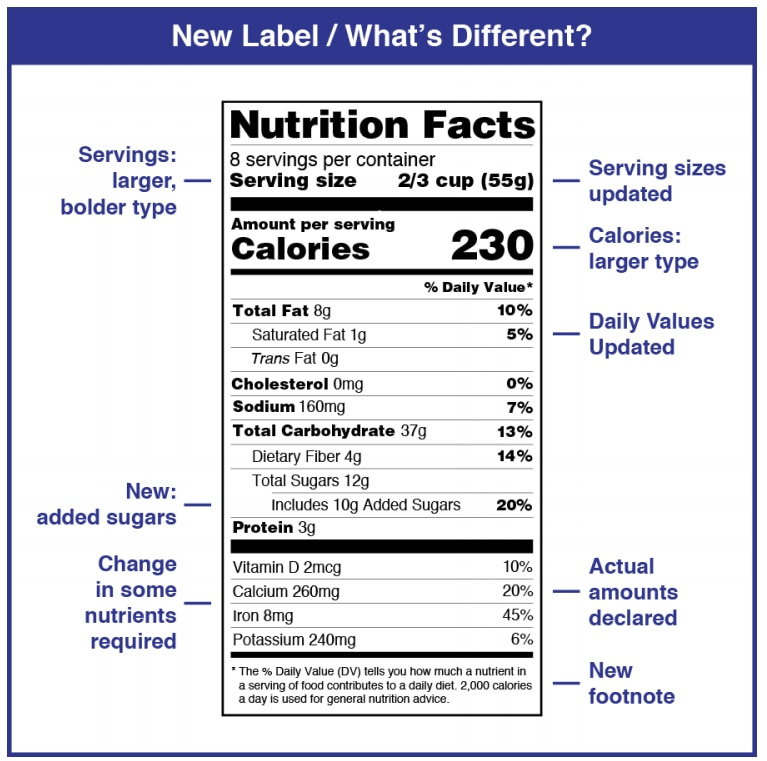



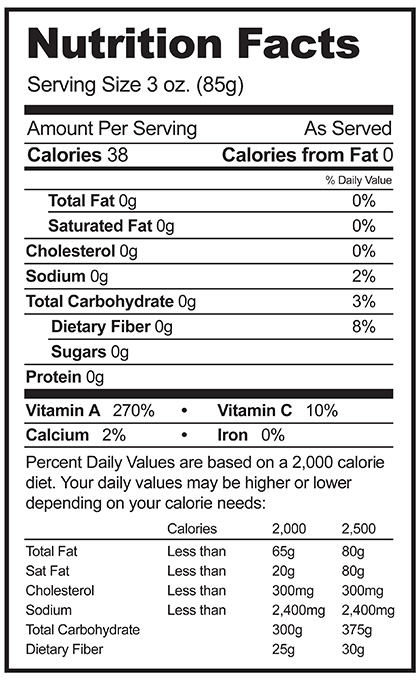


Post a Comment for "38 how many calories are food labels based on"